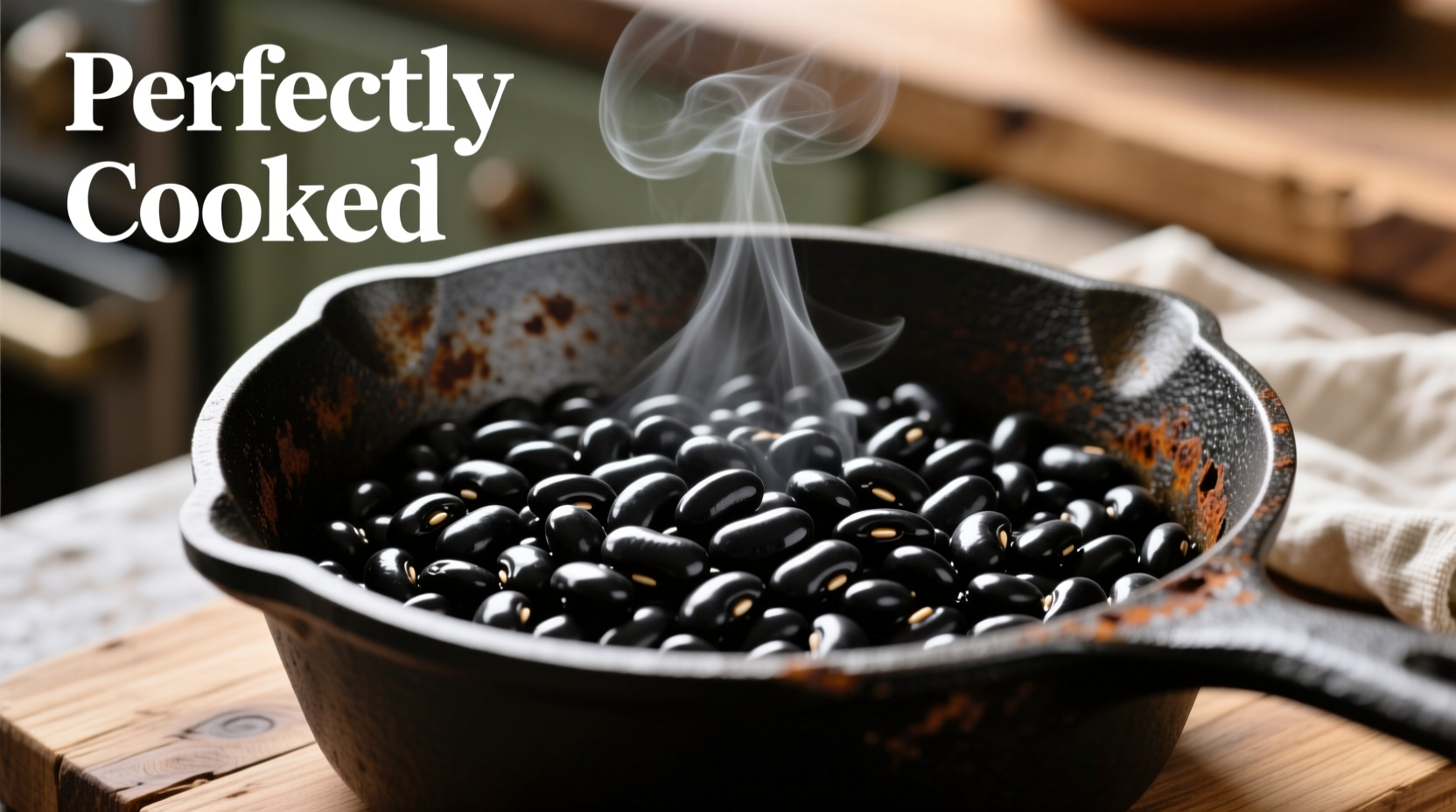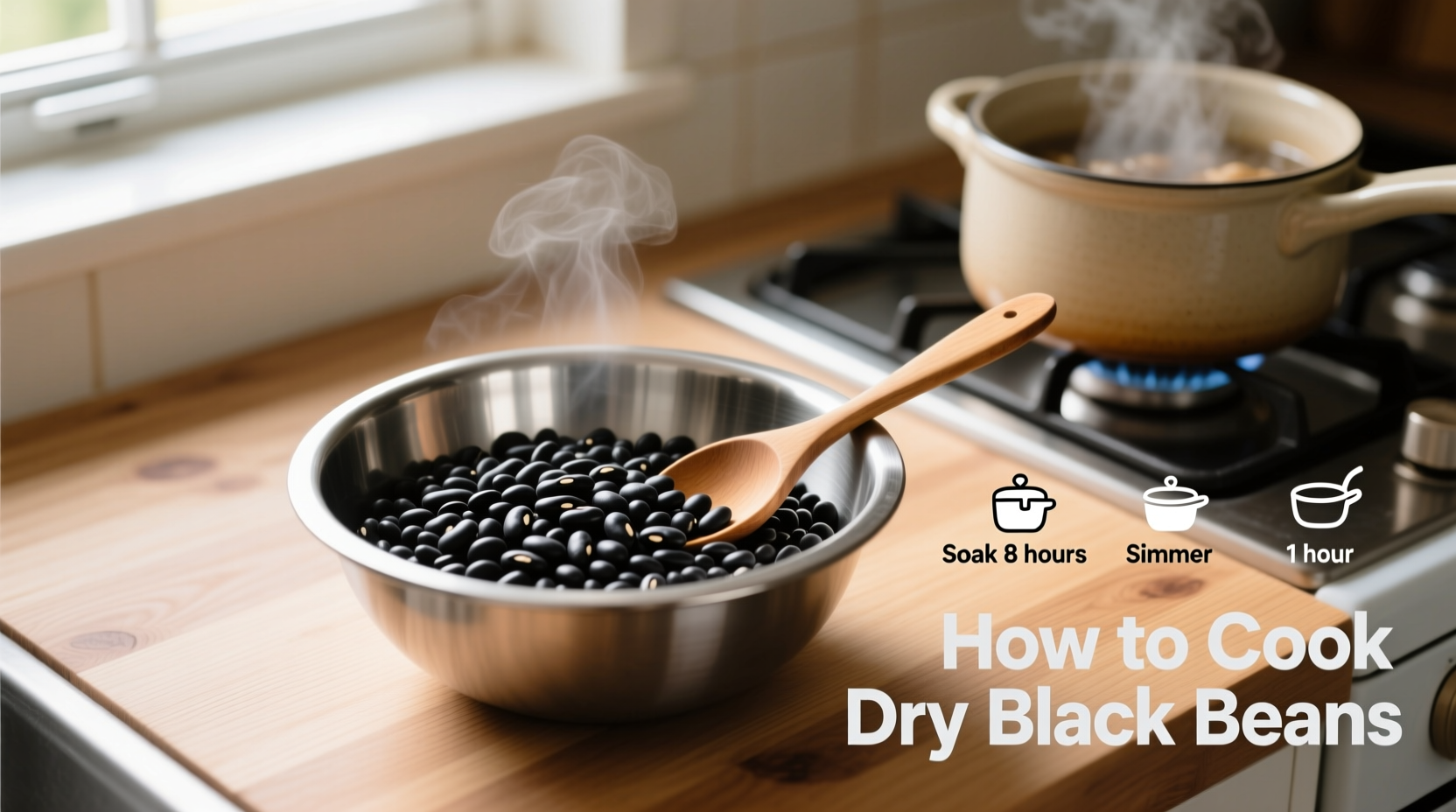
Why Cook Black Beans from Scratch?
While canned black beans offer convenience, cooking from dry delivers superior flavor control, texture, and cost savings. A single pound of dry beans yields nearly 6 cups cooked—equivalent to four 15-ounce cans—for about $1.50 versus $4-$6 for canned versions. The flavor difference is remarkable: properly cooked dry beans have a clean, earthy taste without the metallic notes sometimes found in canned varieties.
Understanding Bean Preparation Methods
Traditional soaking reduces cooking time but isn't mandatory. Modern culinary science shows that skipping soaking works well with minor adjustments to cooking technique. Here's how methods have evolved:
| Preparation Method | Time Required | Texture Result | Best For |
|---|---|---|---|
| Overnight Soak | 8-12 hours + 45 min cook | Most uniform tenderness | Traditional recipes |
| Quick Soak | 1 hour + 50 min cook | Slightly less even | Time-sensitive cooking |
| No-Soak Method | 60-90 min total | Firmer skin, creamy interior | Most home cooking |
Step-by-Step Cooking Process
Step 1: Sorting and Rinsing
Spread 1 pound (2 cups) dry black beans on a light-colored surface. Remove any stones, debris, or discolored beans. Rinse thoroughly in a colander under cold water, swishing to remove dust.
Step 2: Water Ratio and Initial Boil
Place beans in a 4-6 quart pot with 6 cups (1.5L) fresh cold water—3 cups per 1 cup beans. Bring to a rapid boil for 8-10 minutes. This destroys lectins that can cause digestive discomfort. Skim off any foam that forms.
Step 3: Simmering to Perfection
Reduce heat to maintain a gentle simmer. Partially cover the pot, leaving a 1-inch gap. Cook 50-75 minutes, checking tenderness starting at 50 minutes. The beans should be creamy inside but maintain their shape. Crucially, add 1½ teaspoons salt only when beans are almost tender—adding salt too early can toughen skins.
Avoiding Common Cooking Mistakes
Acidic ingredients like tomatoes or vinegar prevent beans from softening. Wait until beans are fully tender before adding these. Hard water can also impede softening—consider using filtered water if your beans consistently remain hard.
At high altitudes (above 3,000 feet), increase cooking time by 15-25% as water boils at lower temperatures. The USDA confirms that proper cooking destroys phytohaemagglutinin, making beans safe to eat (USDA Food Safety Guidelines).
Flavor Enhancement Techniques
Add aromatics during the last 30 minutes of cooking: 1 diced onion, 2 minced garlic cloves, and 1 bay leaf work beautifully. For authentic Latin American flavor, include ½ teaspoon cumin and 1 dried guajillo pepper. Finish with a splash of lime juice and fresh cilantro for brightness.
Professional chefs at the Culinary Institute of America recommend adding a strip of kombu seaweed during cooking—it contains enzymes that break down gas-causing compounds while adding subtle umami (Culinary Institute of America Research).
Storage and Usage Tips
Cool cooked beans in their cooking liquid for best flavor retention. Store in airtight containers with ½ cup cooking liquid for up to 5 days in the refrigerator. For longer storage, freeze portions with liquid in freezer bags for up to 6 months—thaw overnight in the refrigerator.
Use homemade black beans in:
- Cuban black bean soup
- Venezuelan black bean stew
- Bean and cheese burritos
- Healthy bean salads
- Vegan burger patties
Troubleshooting Guide
Problem: Beans remain hard after 90 minutes
Solution: Check water level—beans must stay submerged. Add boiling water as needed. If still hard, your beans may be old (over 1 year storage) or you have hard water.
Problem: Beans breaking apart
Solution: Avoid rapid boiling. Maintain a gentle simmer and don't stir vigorously. Older beans tend to break more easily.
Problem: Excessive foam during cooking
Solution: Skim foam during initial boil. Adding a tablespoon of oil to the cooking water can minimize foaming without affecting flavor.











 浙公网安备
33010002000092号
浙公网安备
33010002000092号 浙B2-20120091-4
浙B2-20120091-4